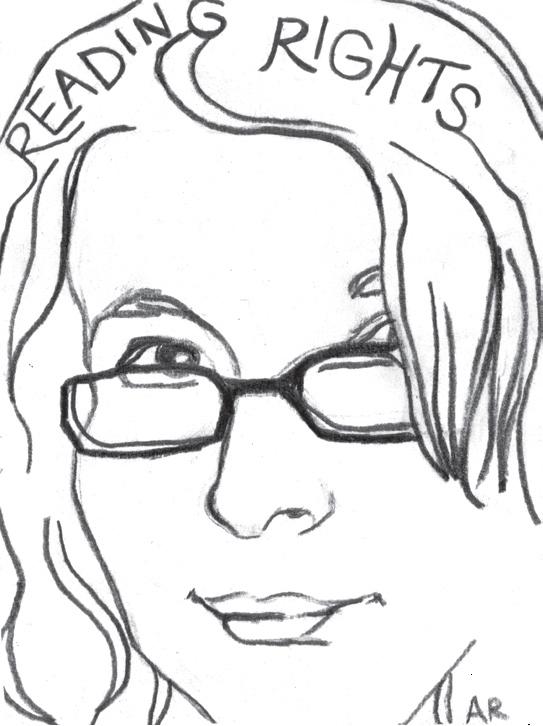
(Drawing by Annie Raccuglia)
Mary Jane Jacob’s convocation earlier this week focused on art as a collaborative process, one which often has to take place outside of museums in order to truly matter to a larger audience. In a museum, art, according to Jacob, is “isolated from human conditions.” During the convocation, I started to wonder how this critique of museums could apply to literature — not just in regards to the classics that are often forced upon us in high school, but also to those new works that are marked as serious and important.
The collaborative process sounds like it is supposed to bring artists back down to earth where they can contemplate how their art can make life better, and I’m not sure if writers have this same luxury. I wrote two weeks ago about Conor Grennan and his mix of memoir and advertisement for a non-profit organization, but I didn’t address the concerns many people have about overly political or topical writing. They assume that it is somehow tainted by the current environment and destined to disappear when the moment passes.
When Grennan’s organization is no longer necessary in Tibet, it will be difficult for his book to have a similar impact. In the spirit of collaboration, he could have compiled narratives from people who had been working in Nepal long before he started. He could have initiated more projects that necessitated involvement. But what, then, would have happened to the book itself?
As a young child, I read a few oral narratives, mostly about little kids and their immigration experiences. One of these books was “New Kids in Town” by Janet Bode. I was enthralled by the separate and short narratives as a fifth grader, but I imagine that if I returned to this book, I would not be satisfied with calling it literature; I might be wrong, and it might be silly of me to assume that this book aspired to such a classification.
But “New Kids in Town” was as collaborative as we can get in literature, combining individuals’ stories under the umbrella of a common theme. These children did not speak with one another, and yet, an editor made them collaborate. It’s a bit artificial even there.
The literature we want to read when we sit down with a book is not one composed by a collective. The idea of one poet’s tortured and misunderstood soul still interests us more than the idea of two tortured souls writing something heartfelt together. This idea kind of leads me to believe that literature is mostly about isolation. It’s mostly about working in that vacuum that allows for a writer to filter the way they see the world in order to maybe show us something new.
Will Smith’s recent movie “Hancock” went through about seven writers before it was produced, and it shows. Tone, character development and sometimes plot have trouble linking up, and the seams are impossible to hide. When I went to see the movie, I had expected a cohesive story, but I ended up getting something like five unfinished ones. That, to me, is the collaborative writing process at its most uncontrolled — minds warring to express an idea radically different from the one expressed before it — leaving us wondering why the stories hadn’t stayed separate in the first place.
